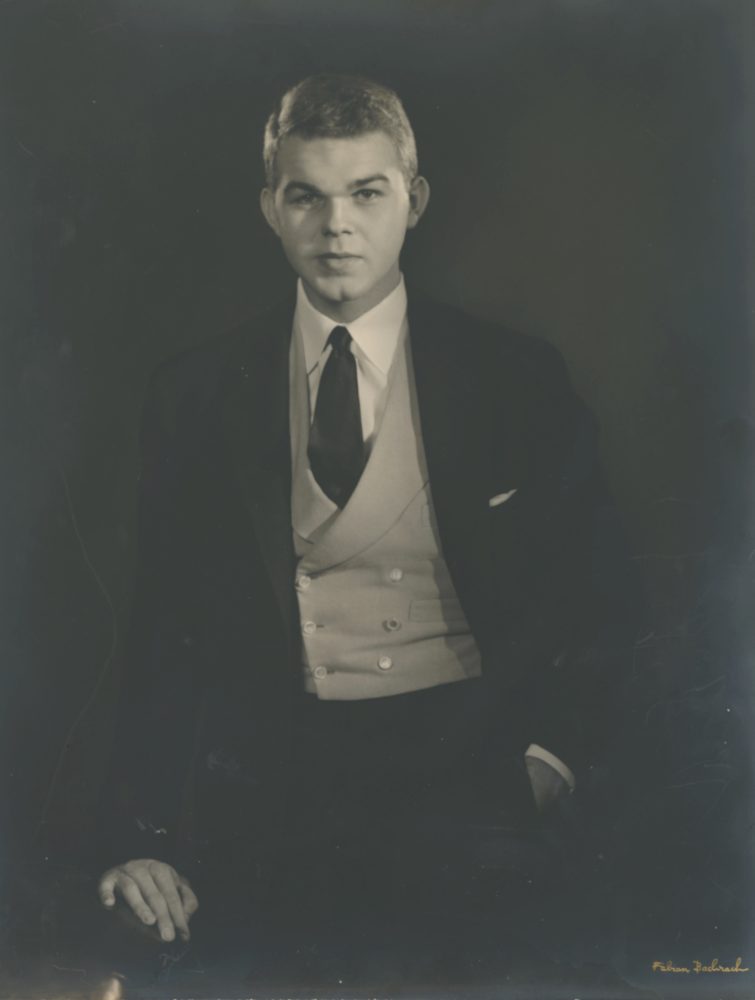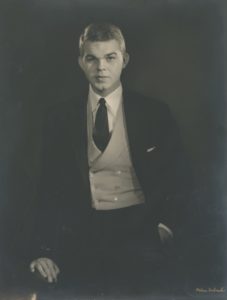Magazine
The Poor Man’s Truman Capote
Speed Lamkin stayed stuck in the other author’s shadow
Published: March 1, 2020
Last Updated: June 8, 2023

University of Louisiana–Monroe
Undated photo of a young Speed Lamkin.
The Capote comparisons were inescapable, especially within the coterie of gay intellectuals—including Gore Vidal, Christopher Isherwood, and Truman himself—that Lamkin orbited. Tennessee Williams, Lamkin’s acquaintance and Key West neighbor for a brief spell, wrote that he was “sometimes referred to as the new Truman Capote. He doesn’t write as well but is more agreeable.” The composer Ned Rorem was even less kind, writing in his memoirs that Lamkin was “the poor man’s Truman Capote.”
Tiger in the Garden is narrated by Henry Nelson, a Louisiana State University graduate returned home to his unnamed north Louisiana town. Like Lamkin, Henry must constantly juxtapose himself against his social superiors, the Richardson family, an old-money dynasty to which he is a distantly related and self-described “poorer cousin.” The Richardson siblings, Caroline and Percy, watch as their town—modeled after Lamkin’s hometown of Monroe—transforms from an aristocratic bayou sanctum into a mundane, middle-class municipality. As the 1920s dawn, the town is on its way to becoming an “imitation of a fifth-rate American metropolis.” Neon lights blur the night sky. The family’s bank relocates into a garish “midget skyscraper.” But worse are the imitation French châteaux built by bourgeois “soda-pop people.” A neighboring mansion becomes a funeral home. The oil industry slays King Cotton. Percy takes to the bottle, wasting his days at a friend’s plantation, the aptly named Hardtimes, which has, in fact, fallen on hard times. A golf and tennis club has purchased a stake in its vast acreage and begun carving the land into courses and courts. Despite her family’s wishes, Caroline, the titular tiger, takes up with Jim, a penniless pleb who dreams of oilfield glories.
“Some men [have] theater lives,” Henry’s mother warns, “enjoyable to watch from a distance.” But Lamkin provides the closeup of their tragic and sometimes sordid third acts. Jim strikes oil, beds down with a wealthy widow, and runs for Congress on Huey Long’s ticket (all three prospects swiftly flame out). Hardtimes burns to the ground, likely torched by a jealous lover of its owner’s mistress. And Percy drowns himself in the town’s garbage-choked river.
The Southern Gothic romanticism helped sell copies—my paperback edition shows Jim and Caroline embracing under the caption “DESIRE under the magnolias”—but what most likely earned Lamkin the Capote comparisons is the novel’s candid portrayal of gay men in the early-twentieth-century South. Henry, though never outed, constantly ogles Jim’s often bare body. He first spies a skinny-dipping Jim through parted branches: “naked from a creek shaking water from his tanned colt body in swift unconscious motions.” Later Jim appears in “a pair of under-shorts that were too tight, and every few minutes . . . pulling them from his crotch.” In New Orleans, Henry accompanies his friend Stanley to a peephole-entry bar frequented by “men of both sexes.” They toast to Henry’s departed cousin—with French-imported crème de menthe on ice, “the swishiest drink on earth,” according to Stanley, who reveals that Percy’s suicide owed to despair over his homosexuality.
Tiger in the Garden did not make Lamkin a star of Capote’s caliber, but sold well enough. Hubert Creekmore, a gay Mississippi writer reviewing the novel in the New York Times, made no mention of the book’s queer undercurrents, at least not overtly. “Speed Lamkin seems not to mean his story to mean what it does,” Creekmore complained.
Lamkin decamped to Hollywood, where he wrote for television and published a second novel, The Easter Egg Hunt (1954), a Beverly Hills farce dedicated to Christopher Isherwood. He soon relocated to New York and secured a Broadway debut for his play Comes a Day. Yet again he was compared to a gay literary luminary. “A puzzling drama that looks like art every now and then,” the New York Times’ theater critic wrote, “[with] at least a surface resemblance to art in the Tennessee Williams manner.” He never published again and moved back to his family’s Monroe home in the 1960s. There, he built a sizable collection of Continental European decorative arts, specializing in the Louis XV and XVI eras, and eventually donated a good portion to the New Orleans Museum of Art.
In the final pages of the novel, during the aforementioned barroom scene, Stanley offers Henry some sound advice cribbed from Oscar Wilde’s The Picture of Dorian Gray. “If one has the feeling, it is no more wrong to do the thing and enjoy it than to have the feeling pressing you to misery. Civilization allows for expression, the happiest development,” Stanley consoles. “One must develop oneself, realize one’s nature perfectly.”
Speed Lamkin passed away in 2011. History might forever remember him as the writer who didn’t rise to the level of Truman or Tennessee. But Tiger in the Garden is worthy of our attention today, just as it was for readers seventy years ago. As an early document of gay life and letters in the American South, as a rare North Louisiana–set novel, and as the work of an extraordinary young man who, like Wilde, held up a mirror to civilization while developing and expressing his nature through art, Tiger in the Garden stands out.
Rien Fertel’s essays on early Louisiana literature appear in two recent edited collections, Remaking New Orleans: Beyond Exceptionalism and Authenticity and New Orleans: A Literary History.
